 Petzlover
Petzlover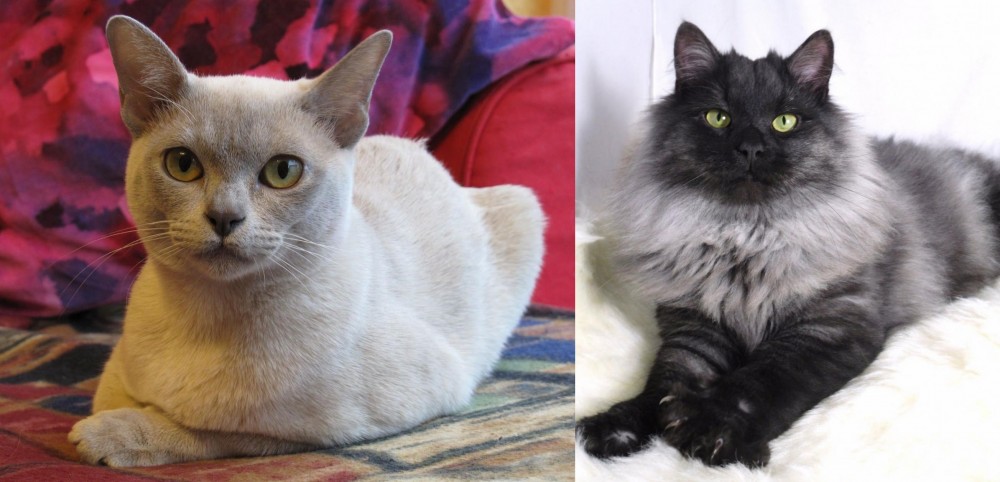 European Burmese is originated from Myanmar but Smoke is originated from United Kingdom. Both European Burmese and Smoke are having almost same weight. Both European Burmese and Smoke has almost same life span. Both European Burmese and Smoke has same litter size. European Burmese requires Low Maintenance. But Smoke requires Moderate Maintenance
European Burmese is originated from Myanmar but Smoke is originated from United Kingdom. Both European Burmese and Smoke are having almost same weight. Both European Burmese and Smoke has almost same life span. Both European Burmese and Smoke has same litter size. European Burmese requires Low Maintenance. But Smoke requires Moderate Maintenance
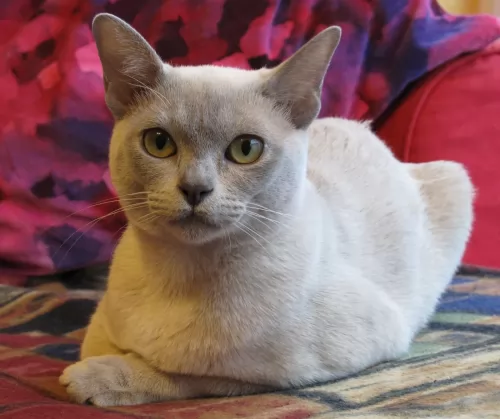 The European Burmese was developed in the 1960s when they were imported to England by British breeders.
The European Burmese was developed in the 1960s when they were imported to England by British breeders.
They were then crossed with red-point Siamese as well as British Shorthairs to expand the gene pool and number of coat colors.
In 1994, the cat was recognized by the Cat Fanciers Association and later by the Canadian Cat Association as well as the Cat Fanciers Federation and others as well.
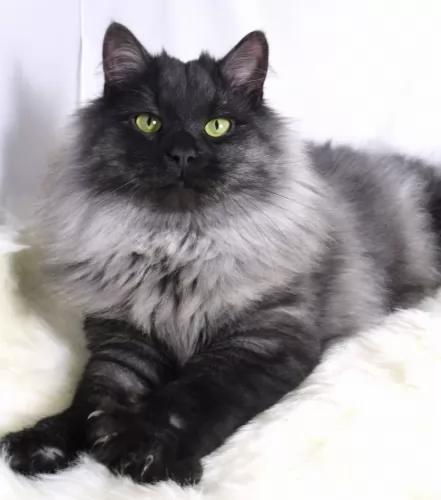 A Smoke cat is a domestic long-haired cat. The beautiful coat coloring usually comes with a silvery undercoat, with the topcoat having color points.
A Smoke cat is a domestic long-haired cat. The beautiful coat coloring usually comes with a silvery undercoat, with the topcoat having color points.
In effect, the Smoke cat isn’t a cat breed as such but is describing the color of the cat. It could be a Persian cat. It seems the Smoke cat has its origins in the 1800s in the UK from where it seems to have originated.
No one really knows the true origin of the Smokes cat but it would seem as though they evolved from breeding silver tabbies to blacks and blues.
While the early Smokes had green eyes, breeding has resulted in there being copper eyes as well.The Asian Smoke is a colour variation of the Asian that was created in the UK in the 1980s.
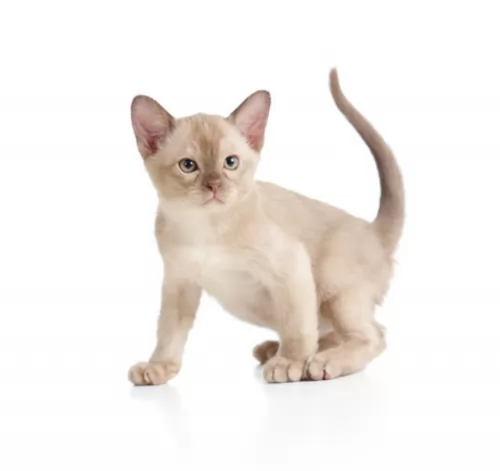 Your beautiful European Burmese cat is a small to medium-sized cat and both males and females will weigh between 3 and 5kg.
Your beautiful European Burmese cat is a small to medium-sized cat and both males and females will weigh between 3 and 5kg.
The cat’s coat is short and glossy and it comes in a number of different colors such as white, brown, cream, blue, red and tortoisehell.The cat has large, expressive eyes that are a yellow or amber shade.
Your European Burmese has a silky short coat and the coat will also only need to be brushed once a week to keep it in tip-top condition.
The European Burmese is a very affectionate, loyal ad intelligent cat, loving the companionhip they share with their human family.
They’re a great pet for families as they’re active and playful. They are also a cat breed that likes to bond with one particular family member more than others.
They’re also inclined to be lap cats, grabbing each opportunity to be stroked and petted. They will also be quite willing to become friends with other pets in the home and don’t like to be left alone for a long time.
They like having other pets around to keep them company and can become withdrawn if constantly left on their own.
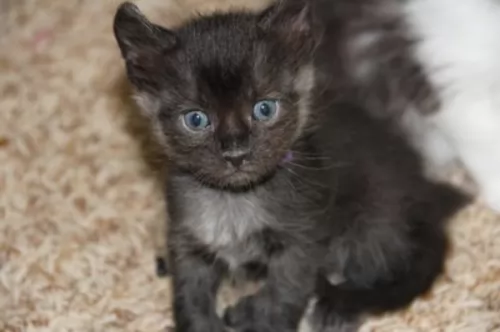 When Smoke kittens are born they have gray and white markings around each eye and around the muzzle.
When Smoke kittens are born they have gray and white markings around each eye and around the muzzle.
Essentially the Smoke cat can be black, cream, blue, red, or even tortie. Smoke actually means that the base of the hair is whitish and the rest of the hair is black, red or blue etc.
These cats can be different sizes but will no doubt be medium-sized and weigh in the region of 3 to 6kg. They are lean and muscular and can have different eye colors too – green or gold.
There are so many cat breeds and they have heaps of colors and patterns. The domestic long-haired cat is capable of a wide range of temperaments.
You can be sure that these cats are playful, fun, curious, and intelligent. Some will be more vocal than others but they will all thrive on the attention they get from their human owners. They are friendly, affectionate cats who will bond closely with their human family.
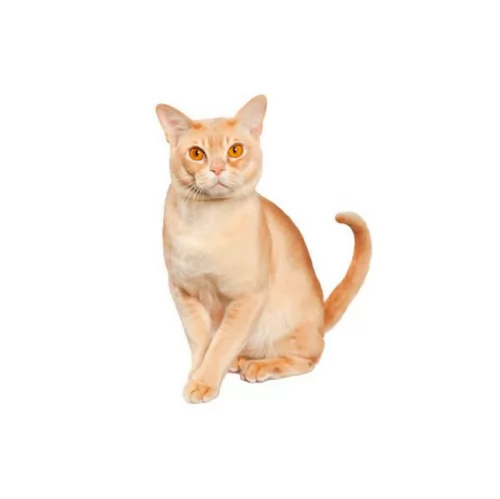 Your European Burmese has a sweet disposition and it is a loving, companionable cat. They enjoy the company of their human owners as well as other pets.
Your European Burmese has a sweet disposition and it is a loving, companionable cat. They enjoy the company of their human owners as well as other pets.
They can be quite vocal too and they don’t like being left alone. If you work all day, it will be a good idea to have another pet as a companion for the European Burmese.
The European Burmese loves to play and is a fun-loving, active, social cat. While they love their human family, they may not make the greatest pet for an inactive, single person as these cats actually seek out companionship.
A person unable to involve themselves with this cat, may well find it becoming depressed. These are cats that require a lot of interaction and attention, craving the attention of their human families.
 Because the Smoke isn’t a cat breed as such but rather a color shade found in some long-haired cats you can’t be sure what your cat will really look like and how he will behave.
Because the Smoke isn’t a cat breed as such but rather a color shade found in some long-haired cats you can’t be sure what your cat will really look like and how he will behave.
They could be energetic, playful, or quiet and relaxed. They might be more vocal and want to talk to you or they may be content just to be wherever you are.
When you bring a Smoke cat into your life, one thing is sure, with his friendly and loving nature your world will become meaningful, as any beautiful cat such as the Smoke is guaranteed to bring in lots of smiles, joy, and love.
 The European Burmese is a fairly healthy cat and is unlikely to cost you a lot in terms of vets fees.
The European Burmese is a fairly healthy cat and is unlikely to cost you a lot in terms of vets fees.
Just like with other cats, some of the common cat illnesses include developing diabetes mellitus. There have been some of these cats that ave been known to suffer from Feline Orofacial Pain Syndrome (FOPS).
It is a disease related to the teeth. Teeth problems are a common ailment with cats. With this particular problem, there is an unusual amount of pain when the cat's adult teeth begin to emerge. Your cat will be displaying a lot of licking and chewing motions. The symptoms do however go away once the adult teeth come in.
The cat will in all likelihood need to see the vet for pain medication and other treatments such as a potassium supplement.
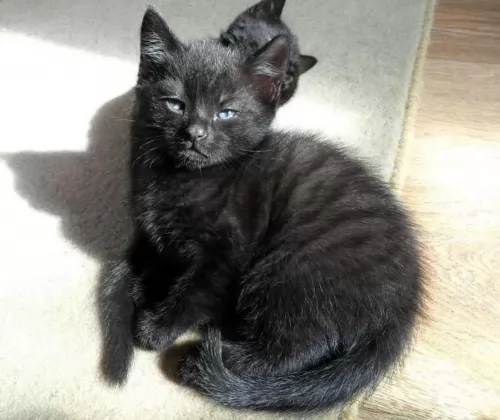 Just like it is wonderful to stroke and pet your pet for his health’s sake, it is also therapeutic for you to stroke your cat.
Just like it is wonderful to stroke and pet your pet for his health’s sake, it is also therapeutic for you to stroke your cat.
Vomiting is one way that you can tell that your cat is sick. He will vomit if he has eaten something he shouldn't have or if he is feeling sick. You must keep an eye on his vomiting as he can become dehydrated and then he wlll need to get to the vet right away.
FLUTD is often brought on by cats that are overweight or unhappy and stressed. It can cause a cat to be miserable, vomit and have a temperature.
You’ll see your cat battling to urinate, he will cry in pain when urinating and be pacing and unsettled. This is an illness that requires urgent veterinary attention.
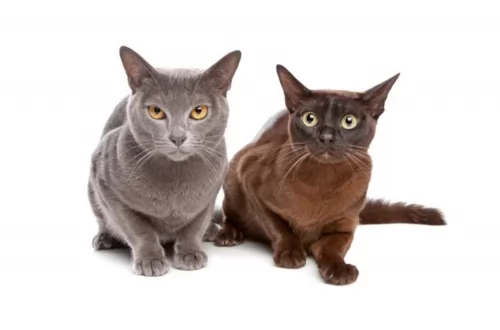 Because the European Burmese is a very affectionate, loyal cat, and because they thrive on the companionship of their human family, you owe it to him to provide him with consistent companionship. They are friendly cats and will be amicable to visitors to the home too.
Because the European Burmese is a very affectionate, loyal cat, and because they thrive on the companionship of their human family, you owe it to him to provide him with consistent companionship. They are friendly cats and will be amicable to visitors to the home too.
Scratching is a natural behavior of pets so instead of becoming angry with your cat when he scratches on your furniture, provide him with a scratching post.
You can also learn how to carefully clip your cat's nails, otherwise a professional cat groomer can do it for you.
It’s not always easy keeping a cat indoors and that is why neutering or spaying becomes important to avoid unwanted kittens. It makes your European Burmese a more balanced cat and it has a host of health benefits too.
It can’t be stressed enough how important good food is for the health of people and animals. The European Burmese needs top quality food high in proteins and meat to remain healthy.
If you feed your cat human food or food high in carbs, expect to spend a lot on vet fees.
Make sure your pet enjoys his food but that it is also nutritious and in the right portions to avoid obesity.
Kittens will eat 4 bowls of food a day and then progress to 2 bowls of food after the cat turns one year of age.
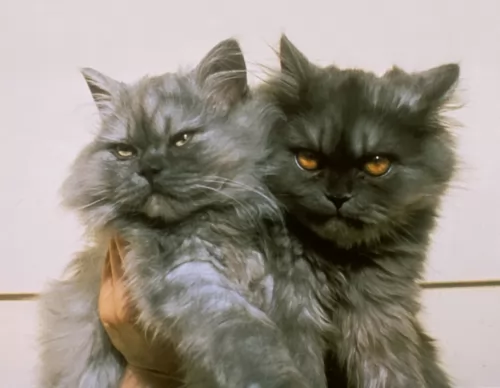 Smokes will require more care than other long- haired cats because their coats are fairly fragile and need to be treated gently and with care. Gentle brushing once or twice a week will keep the coat in top condition.
Smokes will require more care than other long- haired cats because their coats are fairly fragile and need to be treated gently and with care. Gentle brushing once or twice a week will keep the coat in top condition.
The trend today is to brush your pet’s teeth but this can be painful and traumatic for a cat and he can easily lash out in fear, resulting in bites and scratches. The pet groomer and vet can rather look inside your cat’s mouth and tell you if there is any bad tooth that needs attending to.
Provide your cat with good food. Your cat is a carnivore and he must eat meat to ensure his health. The best commercial cat foods are high in protein to ensure your cat gets a balanced meal to promote good health. If in doubt, speak to your vet about the best cat food there is for your furry feline friend.
Provide a constant supply of fresh, cool water.
Provide your cat with a comfortable, soft bed.
Provide him with a litter tray and ensure this is cleaned of the feces every single day.
Have him vaccinated against the major feline diseases. Ensure he goes to the vet when he is in pain or shows signs of illness.